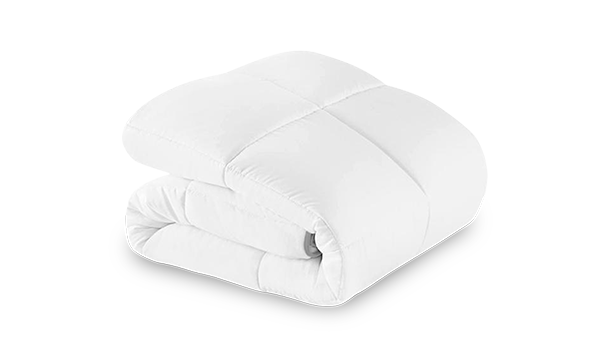Drying a duvet isn't just about getting the moisture out. It's a critical step in the care routine that can significantly impact your duvet's longevity, fluffiness, and overall performance. The way you dry your duvet can make the difference between a comfy, inviting bed and a lumpy, damp one. This blog will guide you on how to dry a duvet and extend its life while maintaining the utmost comfort.
How to Dry a Duvet
After successfully washing your duvet, the next step is to dry it appropriately. Here's how:
- Tumble Dry: If your duvet is machine safe, it can usually be dried in a dryer on a low-heat setting. High heat can damage certain duvet fillings, particularly natural materials like down or feathers.
- Add Dryer Balls: Dryer balls, or even clean tennis balls, can help fluff up your duvet and prevent the filling from clumping together. They work by bouncing around in the dryer and separating the filling.
- Check for Dampness: Make sure your duvet is completely dry before using it again. Even slight dampness can cause mildew or mold. Feel around for any damp spots, especially in the corners and along the seams.
- Air Dry: If you prefer not to use a dryer or if your duvet isn't dryer-safe, you can air dry it. Lay it flat on a clean surface in a well-ventilated area. Avoid hanging it, as this can cause the filling to shift. Make sure it's fully dry before using or storing it.
Check out Puffy mattress reviews from real customers and see how we compare with other brands.
How to Dry a Duvet Cover
Duvet covers often require a separate cleaning method from the duvet itself. Here's how to dry a duvet cover:
- Check the Care Label: As always, your first step should be to check the care label. Some duvet covers may have specific drying instructions.
- Tumble Dry or Air Dry: Most duvet covers can be tumble dried on a low-heat setting. However, you can also choose to air dry your cover to maintain the fabric's integrity. If you're air drying, avoid direct sunlight, which can fade the colors.
How to Dry Linen Duvet Cover
Linen is a wonderful, breathable material that's ideal for duvet covers, but it needs specific care to keep it looking its best:
- Tumble Dry Low or Line Dry: You can tumble dry your linen duvet cover on a low setting, but many linen lovers prefer line drying. Line drying can help maintain the fabric's texture and prolong its lifespan. However, keep it out of direct sunlight to avoid color fading.
- Embrace the Wrinkles: Linen is naturally wrinkly. These wrinkles are part of its charm, so don't worry about trying to get your linen duvet cover perfectly smooth. If you prefer a neater look, iron it while it's still slightly damp.
Use our store locator to find the closest furniture or mattress store near you and feel the cloudlike comfort of our Puffy Mattress in person.
Conclusion
Drying a duvet or duvet cover might seem like a straightforward process, but these additional tips and tricks can ensure your bed remains a cozy, inviting sanctuary. Always remember to check the care instructions, and when in doubt, air on the side of caution. Happy drying!

- Oeko-Tex® Standard 100 certified.
- Hypoallergenic.
- Lifetime warranty.
- 101-night sleep trial.
- Free shipping and returns.












